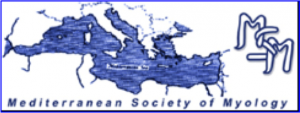Background. Duchenne muscular dystrophy (DMD) causes progressive pathologic changes to muscle secondary to a cascade of inflammation, lipid deposition, and fibrosis. Clinically, this manifests as progressive weakness, functional loss, and premature mortality. Though insult to whole muscle groups is well established, less is known about the relationship between intramuscular pathology and function.
Objective. Differences of intramuscular heterogeneity across muscle length were assessed using an ordinal MRI grading scale in lower leg muscles of boys with DMD and correlated to patient’s functional status.
Methods. Cross sectional T1 weighted MRI images with fat suppression were obtained from ambulatory boys with DMD. Six muscles (tibialis anterior, extensor digitorum longus, peroneus, soleus, medial and lateral gastrocnemii) were graded using an ordinal grading scale over 5 slice sections along the lower leg length. The scores from each slice were combined and results were compared to global motor function and age.
Results. Statistically greater differences of involvement were observed at the proximal ends of muscle compared to the midbellies. Multi-slice assessment correlated significantly to age and the Vignos functional scale, whereas single-slice assessment correlated to the Vignos functional scale only. Lastly, differential disease involvement of whole muscle groups and intramuscular heterogeneity were observed amongst similar age subjects.
Conclusion. A multi-slice ordinal MRI grading scale revealed that muscles are not uniformly affected, with more advanced disease visible near the tendons in a primarily ambulatory population with DMD. A geographically comprehensive evaluation of the heterogeneously affected muscle in boys with DMD may more accurately assess disease involvement.






